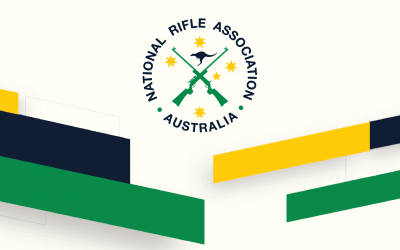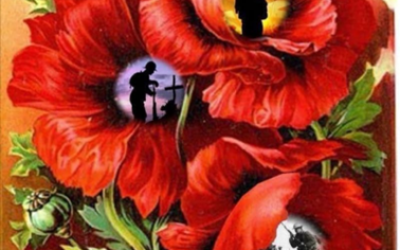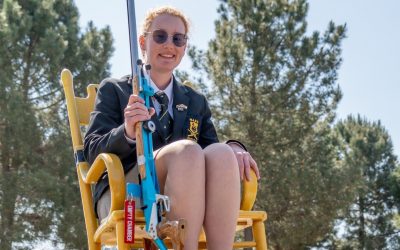The Syme has long been included in the Victorian Rifle Association annual meeting in later years taking pride of place as the leadup to the King’s/Queen’s and subsequently a part of the Percy Pavey Grand Aggregate. The Syme matches commenced in 1901 with the donation of £100 for each of 5 years of competition by the owner of The Age newspaper, David Syme. Born in Scotland 2 October 1827 David Syme[1][2] was a Scottish-Australian newspaper proprietor of The Age and regarded as “the father of protection in Australia” who had immense influence in the Government of Victoria. His first biographer, Ambrose Pratt, declared Syme “could hate as few men can [and] loved power as few men ever loved it”.
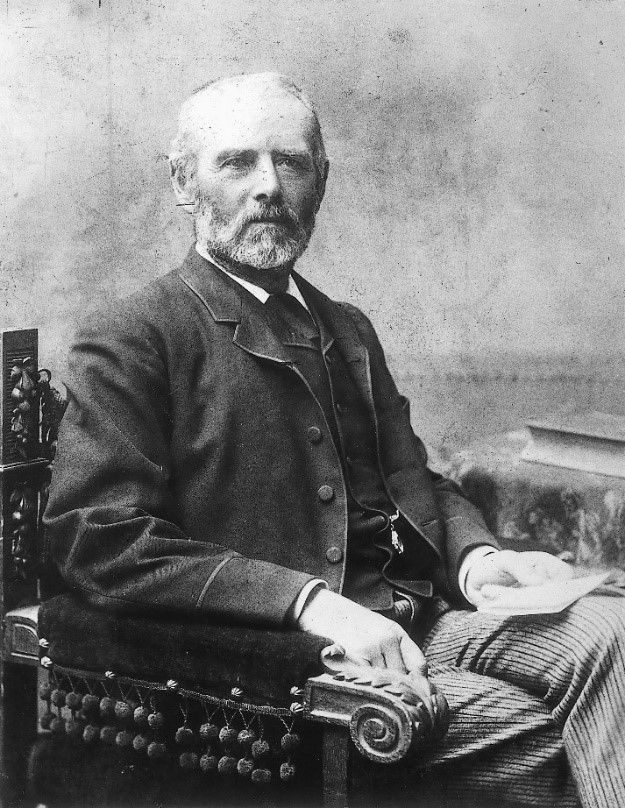
David[3] arrived in Sydney, Australia in early 1852 taking a steamer to Melbourne and then walked to Castlemaine to try his luck on the gold fields.
His brother Ebenezer was editor of The Age newspaper and David invested in the business with Ebenezer and worked with him for a period from 1856. When Ebenezer retired in 1859 David returned to the paper and in 1860 when Ebenezer died he took on The Age fulltime.
In 1859 David Syme married Annabella Johnson with whom he had 9 children.
Syme wrote several books on a variety of subjects and involved himself in philanthropic activities. These included funding a Victorian Rifle Team to Bisley and financing expeditions to New Guinea and Central Australia. He gave money to the University of Melbourne to fund studies, endowing the Syme Prize for research in biology, chemistry, geology and natural philosophy.
David Syme died 14 February 1908[4]. Alfred Deakin, a friend, described Syme on his death as “one of the greatest men in colonial history”.
Several biographies are referenced in this document. Each describes the breadth of David Symes education, travels and political influences and are recommended reading.
Support of the Rifle Shooting Movement in Victoria
As editor of The Age newspaper, Syme was able to provide written support through his newspaper for the Rifle Club movement in Victoria[5]. Indeed, The Age had its own rifle club for a period.
In 1884, the Victorian Minister; for Defence (Sir Frederick Sargood) commissioned Colonel Tom Price to raise an auxiliary force from rifle clubs throughout Victoria. Criticised by many old regular soldiers at first, the movement soon met with success. Gradually rifle clubs became a separate part of the defence force and were regarded as a reserve for an emergency.
In the 70 years of Victorian rifle clubs “The Age” has taken a keen interest in the sport; vigorously campaigned for its extension; advised it on modern techniques, and given financial support to many of its ventures.
It is said that Syme believed that the duty of every citizen was to defend his country in an emergency with Rifle Shooting appealing to him as ideal defence training. The campaign supported by Syme and The Age led to a rapid growth in Rifle Clubs particularly during the period 1898 to 1901.
David Syme’s will[6] restricted sale of any company equity in his son’s lifetimes. The Age remained under control of members of the Syme family up to 1983 when Fairfax bought out the remaining shares of David Syme & Co.
Syme’s Assistance for the Victorian Rifle Team to Bisley in 1897
When it was suggested[7] that the Victorian Government should send a picked team to Bisley to compete for the Kolapore Cup, during Queen Victoria’s jubilee year, 1897, “The Age” backed the proposal. The Premier, Mr. (later Sir) George Turner supported the proposal at first. But when the sponsors asked for financial backing he refused “in consideration of the state of the finances and the prospect of a budget deficit.” Repeated pleas by the Minister for Defence (Mr. William McCulloch, MLC) failed to move Turner, who never ” had a thought beyond squaring a ledger. McCulloch looked for private backers. Called first on Syme. The one-minute interview is recorded in Ambrose Pratt’s biography of Syme;
Mr. McCulloch; Hello, Mr. Syme. I hope I find you in a good temper, for I’ve come to beg a favor from you.
Mr. Syme: Well, what is it?
Mr. McCulloch: Turner’s prospective deficit has so dismayed him that he won’t allow me a penny to send the rifle team ta Bisley. I have come to you for help.
Mr. Syme: Hum, How much do you want?
Mr. McCulloch: Two thousand pounds.
Mr. Syme: Very good. I shall send you a cheque. Good afternoon, Mr. McCulloch. Sorry to drive you away, but I am very busy.
Wise Investment
Turner publicly acknowledged the gift. It was a wise investment. The Victorian team won the Kolapore Cup in competition with the Empire’s best shots.
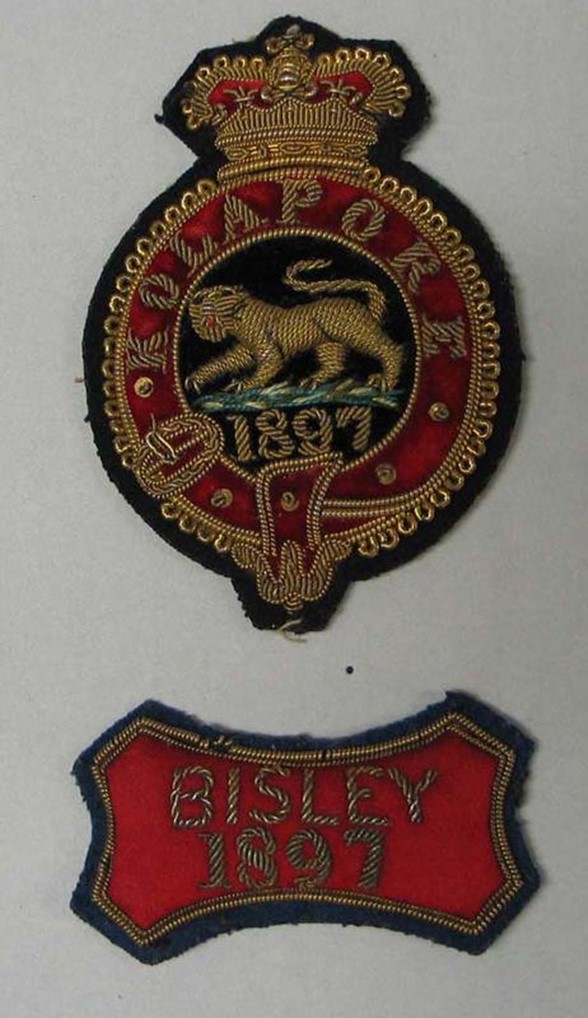
The Victorian Rifle Association, on February 26, 1897, placed on record its appreciation and admiration “of the generosity and public spirit dlsplayed by David Syme, Esq., in undertaking to pay the whole of the expenses of a team of riflemen to proceed to England.”
The successful team was led by Colonel Templeton and comprised Phil Fargher (afterwards secretary of the V.R.A.), W. Todd, A. Carter, J. A. Ross, G. Hawker (father of Harry Hawker, the famous pre-1914 long distance flyer); W. Sloane, J. Grummett and E. Walker.
It can only be said that this was a particularly generous gesture by Syme for the times. Meeting with the success of winning the Kolapore Cup vindicated the expense of the sponsorship.

Some specific details on the Victorian team and their quest for the Kolapore Cup can be found at the following web sites.
https://connect-history.com/the-bisley-boys-the-victorian-rifle-team-and-the-kolapore-cup-1897/ and
https://www.mhhv.org.au/the-bisley-boys-the-victorian-rifle-team-at-bisley-1897/ Article by Andrew Kilsby

The David Syme Aggregate
“The David Syme” or more simply known as “The Syme” has been a part of the VRA King’s/Queen’s Series since 1901. It evolved in the following decades from a “special” aggregate to “Grand Aggregate” to a stand alone competition that now, with the King’s/Queen’s, forms the Grand Championship Aggregate for the VRA annual championships.
The VRA Committee published a programme and conditions for the matches in its annual competition and from these it can be seen that the matches included for the Syme Aggregate changed regularly. The Syme sometimes included Stages of the Kings or the whole King’s Aggregate along with other matches and Service Rifle Matches as defined by the VRA when planning their annual competition.
A partial chronology of the evolution of the Syme is shown below taken from newspaper articles. Later details cannot be confirmed at this time as the Trove articles cease in 1954 and we understand the VRA lost some records due to water damage.
1900
In order to foster[9] and encourage rifle shooting, Mr. David Syme, proprietor of the “Age,” has written to the Minister for Defence, informing him that the Government may count on the hearty support and co-operation of every true colonist, and, as he would like to be one of the pioneers of the movement, he offered £100 a year for five years, to be given in prizes, for the best rifle shots. The Minister, in accepting Mr. Syme’s generous offer, admitted that rifle shooting was an important item in the defence of the colony, and that his donation would give an impetus to the formation of rifle clubs and general practice of rifle shooting.
1901
In what appears to be the first year of competition for a “Syme”, there was a bit of indecision from the VRA Council about how best to award the prize. In the end, a “Special” Grand Aggregate was decided on at their September meeting.
February
A meeting of the council of the Victorian Rifle Association[10] was held at Young and Jackson’s last night to deal will) the compilation of the programme for the annual matches. The secretary, Mr. Thomas, stated that he had been in communication with the various donors of money to be devoted to the encouragement of rifle shooting. He stated that Mr David Syme had agreed to give the association his donation of £100 for five years, to be devoted to prize money as might be decided on. Mr. F. S. Grimwade, M.L.C., had also agreed to a similar proceeding in respect to the £100 for five years donated by him. It was decided to include in the programme special events, under the name of the “David Syme” match, and the “F. S. Grimwade” match. The conditions of the former event were fixed at 10 shots at 600 yards, for marksmen who had not since December, 1896, won prizes exceeding in the aggregate £3 at any one rifle association meeting. The event thus ranks as one of those designed for juniors, and will therefore offer additional encouragement to Rifle club members at these annual matches. There will be about 80 prizes in the match, ranging from £6 to 10/ each.
July
The matches comprised in the Zeal[11] Aggregate (the Syme, the Grimwade, and the Bell-Jackson) are for juniors, and the Lambs match is open to teams of four or to individual members eligible to compete in the Junior Aggregate, there being no stipulation as to time, as there was last year.
September
At a meeting[12] of the Victorian Rifle Association held last evening, it was decided that Mr David Syme’s gift of £100 and the association gold medal, should comprise the first award for the grand aggregate to be fired at Williamstown shortly.
November
THE SYME SPECIAL GRAND AGGREGATE[13].
First prize. £100. presented by Mr. David Syme, and V.R.A. gold medal (value £10); second, silver medal and £25; third, bronze medal and £15; 128 prizes (£300). To be awarded to the competitors whose scores in King’s (1st stage). Freeman, Templeton, Sargood. Frank Stuart and Members Matches make up the highest aggregates. J. Grummett, Hawthorn. £110 /W. A. Jacobs, N.S.W., £25 ./ P, Fargher, M.U.C., £15 .
1902
In 1902 the VRA added a special condition that the prize could not be won by the same man for a second time. However, shooter J. Grummett was again top scorer.
THE GRAND AGGREGATE[14] £100 PRIZE WON BY LIEUTENANT ISON. J. GRUMMETT WINS THE CHAMPIONSHIP.
The principal interest at yesterday’s meeting of the V.R.A. at Williamstown centred in the results of the grand aggregate series of matches. Those well up in the series put forth their very best efforts in the Frank Stuart Match, which was shot yesterday, and was the last to count for the aggregate, in order to improve their positions if possible for the big aggregate prize, and also to gain the title to be styled champion of the meeting. In connection with this event the unexpected happened. The council of the V.R.A. this year attached a condition lo the contest, that the special prize of £100 could not be won a second time by the same man. This was done with the desirable object of widening the interest in the competition, and rendering the event more popular in a competitive sense. It was hardly anticipated, however, that this condition would become immediately operative; it was expected to he merely a formal entry in the programme, it being highly improbable that the same man would ever make the highest score twice. But this contingency, strange to say, has already occurred. J. Grummett, “who won the grand aggregate last year, came out on top again this year. He therefore takes the title of champion, but not the big prize. In this case the £100 goes to the second man, and the second prize, £25, to the first man. The latter, however, takes the gold medal of the association as champion shot. J, Grummett, in winning this distinction for the second year in succession, again demonstrated those hardy, plodding qualities that have carried him well forward in many a hard-fought contest. The competitor who gained the second place and the first cash prize of £100 was Lieutenant W. Ison, of the Victorian Railways Regiment. Grummett’s aggregate score was 453. Ison’s was 452, showing very close running between them. Ison also takes the V.R.A. silver medal. R. Costin, who was . leading until yesterday morning, failed badly in the Frank Stuart contest, and concluded the. series with a grand total of 448, which gave him fifth place. The third position was gained by. J. H. Williams, of. Bendigo, who takes the V.R.A. bronze medal and, £15, with 450; Bombardier Reilly, of the Victorian Royal Artillery, being fourth.
1908
David Syme passed away in February 1908 however the aggregate was competed for in late October of that year.
The Syme champion aggregate[15] of £100 and a £10 gold medal also went to New South Wales, the winner being Private Tom Hill, of Orange, whose aggregate in all the A series matches was 571.
1909
In 1909 we find that the Syme Grand Aggregate included the score for all 3 stages of the Kings, The Marshall, the Templeton and the Sargood of the King’s.

1910
The executors[16] of the late Mr David Syme have decided to once again present £100 to the Victorian Rifle Association, as first prize in the Champion series. This has been many years the largest aggregate prize offered in Australia and attracts marksmen from all parts of the Commonwealth to the Williamstown gathering
1913
Although[17] the prize money directly given away in these competition amounts only to £610, much more may be indirectly won. For instance, 895 prizes, amounting to £750. are awarded to the competitors whose scores make up the highest aggregate in these three matches and the Marshall, Templeton and Sargood. The first, second, and third highest score in this David Syme Aggregate, as it is called, together with the first three stages of the King’s, are entitled to the V.R.A. gold, silver, and bronze medals respectively.
1920
The first competition after WW1 in Victoria was in 1920. The article below seems to indicate that the Grand Aggregate was not called the Syme in this year’s competition however it was included in the programme for the meeting.
Victorian Prize Meeting[18].
The Victorian Rifle Association has issued programmes for the fifty-fourth prize meeting, to be fired at North Williamstown, from November 8 to 16. There has been a general reduction in the prize lists all round, on the 1913 programme, and as this is the first prize meeting since then the executive are not presumably sure of their position. However, an excellent series of contests and substantial prizes are offered, and the meeting is sure to attract many men from South Australia, as they appear to like the Williamstown range, and in the past our riflemen have figured prominently on many occasions. The King’s list has been reduced from £1,000 to £700. The first prize for this year is £50, against double that amount in 1913, and the total number of prizes is 254 against 300 previously. Matches No. 2 to 5 have 115 prizes, valued at £180; No. 6 has 123 prizes, totalling £180, and No. 7 has 124 prizes of the value of £200. The grand aggregate, which was formerly the Syme, with first prize of £100, drops from a total of£750 to £540, first money being £50, with a total of 318 prizes, against 393. Special prizes are reserved for returned soldiers and sailors, and £100 is provided for a separate match for these men, first prize being £10, there being 118 altogether. Shooting at 1,000 yards has been cut out, and the highest 100 aggregate scores in the three stages of the King’s will fire 10 shots at 900 yards. The first stage of the King’s is seven shots at 300, 600, and 600 yards; second stage, 10 shots at 860 and 600 yards; third stage, 10 shots at 800 and 900yards.
1921
The executors of the late Mr. David Syme[19] have donated £100 to the Victorian Rifle Association’s forthcoming prize meeting. This amount will represent the first prize in the A series aggregate, which will be named, as in previous years, The David Syme Grand Aggregate.
In A- series[20] the “principal matches are – The King’s Prize and David Syme Aggregate, first prize in each being £100. In the King’s, the total, prize money amounts to £847, divided into 431 prizes, and in the Aggregate; £547 divided into 230 prizes There are also, six other matches in the series with, prize money of from £130 to £200 per match.
1923
From an article written by Stan Edwards for the Sporting Globe in Melbourne it would appear that the Syme was still an aggregate competition that included service rifle.
The Syme Aggregate [21] consists of five ten-shot matches of £150 each over different distances from 300 to 900 yards. The prize list is practically the same as the King’s”
Programmes[22] for the next meeting of the Victorian Rifle Association (for 1924) are available. On Monday. March 10, the opening match of the David Syme aggregate (the Frank Stuart) will be fired from 300 yards. The Lang (service), the Marshall (500 yards), and the Swallow and Ariell (600 yards), will follow. Tuesday will be set apart for the Templeton (700 yards) the Sargoods (900 yards), and the Semmens Teams (600 yards). The grand aggregate, first prize £100, will be concluded with the Sargoods.
1929
There are no matches of more than 10 shots, and six of the matches will count for the Syme aggregate[23], for which the first prize is £100. This event carries 188 prizes valued at £500.
1932
VICTORIAN ANNUAL MATCHES[24]
Programmes for the annual matches of the Victorian Rifle Association are now in circulation. It was only natural that a slight reduction would be made in the prize money,, but the complete programme is a comprehensive and interesting one. The matches will be fired on the Williamstown Range from Saturday, March 5, to Thursday March 10. The Williamstown Range is recognised as one of the fairest on the Commonwealth. It is a range where every competitor shoots under the same conditions. With the reduction in prizes it pleasing to notice that the entry has also been reduced, for a complete entry in the A aeries, the total is £5/17/6, for B aerie* £1/4, and for C series 17/6. The matches embrace all ranges from 300 to 900 yards. There are 12 competitions in A series, the principal one of which is the King’s with 156 prizes amounting to £416. The winner of the King’s will receive £00, second £35, third £15, fourth £10, fifth £7, and the remainder in smaller amounts down to £1/5/. In each of the individual matches the winner will receive £7, and there are 107 prises for a total of £100. On the second day of the matches the A series will commence with matches over 300, 500, and 600 yards, which completes “The Argus” and “The Australasian” aggregate, and there are in addition service and team matches. On the third day, Tuesday, March 8, competitions will be decided over 700, 800, and 900 yards, and these, added to the first day’s shooting will comprise the David Syme grand aggregate. First prize in the David Syme aggregate is £50, second £25, third £15, fourth £10. and fifth £7. In this aggregate there are 155 prices for £309.
1937
Altogether, about £4000[i] will be distributed in prize money. The David Syme[ii] grand aggregate prizes will be fired over 300, 400, 600, 700, 800 and 900 yards, and the King’s over 300, 500 and 600; 600 and 700, and 600, 800, and 900 yards. In each range match there will be 182 prizes and for the Syme aggregate and the King’s, 189 and 282 prizes reflectively. It should be a popular programme. The matches commence on March 6, and finish on March 12, and the targets used will be of the same dimensions as last year.
1947

1948
First Stage Today[27]
Australia’s outstanding rifle shots compete today at Williamstown in the first stage of the 1948 King’s Prize, and the opening matches of the David Syme Grand Aggregate.
Tomorrow the 400 marksmen fire for the King’s second stage, and the David Syme Grand Aggregate.
1950
By 1950, the Syme appears again to have been a 2 day event in its own right rather than an aggregate of various matches or aggregates.

1954
Rifle Championship Won by Ross Laing[28]
The championship of the Victorian rifle matches at Williamstown last week was won by Ross Laing, of the Rails and Trams Institute, Sydney. He won the Jamieson aggregate at the N.S.W. matches last October. The title Is gained with the highest aggregate score of the Syme grand aggregate, the Brand service contest, and the Queen’s



At the time of writing the 2023 David Syme had been won by Bob Crawford of the Natives Rifle Club, Queensland.
[1] https://en.wikipedia.org/wiki/David_Syme
[2] https://adb.anu.edu.au/biography/syme-david-4679
[3] Image from the Australian Media Hall of Fame
[4] https://trove.nla.gov.au/newspaper/article/208622143?searchTerm=david%20syme.%20bisley
[5] The Age 16 Oct 1954
[6] https://en.wikipedia.org/wiki/The_Age
[7] The Age 16 Oct 1954
[8] https://collection.australiansportsmuseum.org.au/persons/20550/national-rifle-association-of-united-kingdom
[9] The Daily telegraph 24 Feb 1900
[10] The Age 27 July 1901
[11] The Argus 24July 1901
[12] The Geelong Advertiser 10 September 1901
[13] Leader (Melbourne) 30 Nov 1901
[14] The Age 22 November 1902
[15] The Sydney Mail and New South Wales Advertiser 4 Nov 1908
[16] The Argus 27 June 1910
[17] The Herald 28 Oct 1913
[18] Observer (Adelaide) 6 Nov 1920
[19] The Age 22 August 1921
[20] World (Hobart) 15 Sept 1921
[21] Sporting Globe 3 Jan 1923
[22] The Daily Telegraph 28 December 1923
[23] The Mercury (Hobart) 10 January 1929
[24] The Australasian 16 January 1932
[25] Weekly Times, (Melb.) 2 January 1937
[26] Weekly Time (Melbourne) 2 Jan 1937
[27] The Age 8 March 1948
[28] The Age 22 March 1954
[29] https://collection.australiansportsmuseum.org.au/objects/14442/medal-vra-david-syme-grand-aggregate-1933

